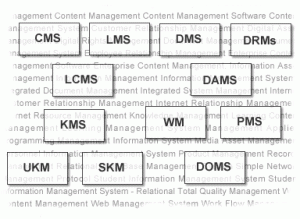Repositories
| “[T]he current and prospective era of information abundance will challenge many basic assumptions and practices about safeguarding, protecting, filtering, preserving, evaluating, purging, describing, cataloguing, and vetting information for the purposes of teaching, learning, and scholarship”Paul B. Gandel, Richard N. Katz, and Susan E. Metros. “The “Weariness of the Flesh”: Reflections on the Life of the Mind in an Era of Abundance,” EDUCAUSE Review, vol. 39, no. 2 (March/April 2004): 40–51. |
Information Ecology
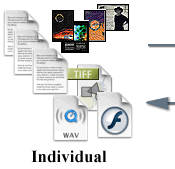 |
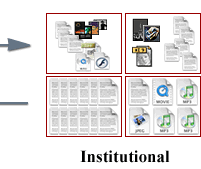 |
Paul Gandel, Richard Katz and
Susan Metros discuss the life of a mind in an era of abundance, noting
that, thanks to the proliferation of computers and networks, access to
information is now relatively easy, inexpensive widespread and
democratic. The challenge as they see it is in the management of all
this information for which they envision an
“information ecology” that focuses on organically building shared
knowledge stores from the bottom up.
Current
systems for managing institutional repositories such as DSpace use
rigid organizational schema designed to meet the needs of the
institution not the individual…
Systems for managing personal repositories should allow individuals to created their own organization, sequences and contextual relationships…
Untitled
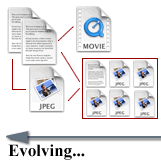 |
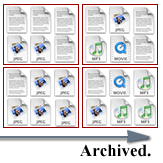 |
“Institutional repositories can encourage the exploration and adoption of new forms of scholarly communication that exploit the digital medium in fundamental ways.”
Clifford A. Lynch. “Institutional Repositories: Essential Infrastructure for Scholarship in the Digital Age” ARL, no. 226 (February 2003): 1-7.
Plethora of content management systems…
There are a plethora of content management systems on the market today, systems for managing courses, news, journals, e-portfolio, research, archives and so on. All of these systems control how content is published along a continuum.
Segue for evolving publications, Concerto for completed publications
Segue as a content management system is designed for evolving publications of primarily textual material. It is complemented by Concerto, our digital objects management system, which focuses more on completed publications of any content ranging from text to images, audio, video to simulations and so on. In their next versions, content from either of these systems will be interchangeable with Segue functioning as a portal for Concerto collections and exhibitions and Concerto functioning as an archive and search interface of Segue sites.
Evolving content granules, collections and exhibitions.
These systems will have nearly identical functionality but will differ primarily in their user interfaces. Segue will be designed to provide strong support for the hierarchical and chronological or sequential organization of evolving content blocks. Concerto will provide stronger support for searching collections, creating exhibitions and adding metadata that describes assets that have completed their creative evolution. Segue will be a portal for content from a variety of sources, Concerto will be an archive and search interface.
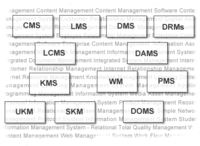 Vendors from previously distinct industries are innovating extraordinary new convergent learning technologies and integrating them into product suites. The applications they’re developing are known by a bewildering array of three-letter acronyms.Adkins, S., “The Brave New World of Learning,” TD. (57) 6, June 2003: 29-37.
Vendors from previously distinct industries are innovating extraordinary new convergent learning technologies and integrating them into product suites. The applications they’re developing are known by a bewildering array of three-letter acronyms.Adkins, S., “The Brave New World of Learning,” TD. (57) 6, June 2003: 29-37.
Most of these management systems may well be encapulated by the following:
Content: for evolving publications
Workflow: i.e. publication management
Knowledge: tracking assets
Assets: creating assets
Robust feature-rich content managment systems are needed to to create
individuals repositories. In particular, individuals should be
able to:
1. Create organizational hierarchies and associative categories of content objects
2. Control layout, appearance, order and sequence of content
3. Specify various types of content abstraction
(e.g. RSS, chronological and categorical summary lists)
2. Control access to content they are authorized to manipulate


